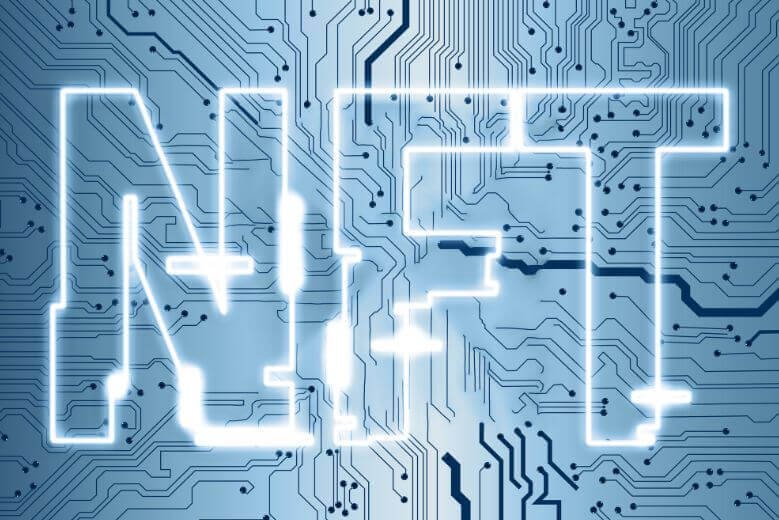NFTs (non-fungible tokens) are taking the art world by storm. What are they and how they benefit the art world and social media influencers.
NFTs and their Impact on the World
To understand Non-Fungible Tokens or NFTs, one must understand the concept of fungibility and also how they are different from other products.
Meaning non-fungibility
Fungibility is the property by which something can be replaced by another of identical nature and value. For example, a twenty rupee note is fungible because it can be replaced without another twenty rupee note. Shares, mutual fund units, etc., are fungible too. Similarly, cryptocurrencies like bitcoins too can be considered fungible as one bitcoin, for example, can be replaced by another bitcoin.
Now, the original painting of the Mona Lisa, to take another example, is non-fungible. It can’t be replaced by something identical due to its unique nature. In the digital world, that can be true for digital drawing or painting as well. An NFT is a kind of digital asset that proves the ownership of such a painting.
Fungibility is the property by which something can be replaced by another of identical nature and value. For example, a twenty rupee note is fungible because it can be replaced without another twenty rupee note. Shares, mutual fund units, etc., are fungible too. Similarly, cryptocurrencies like bitcoins too can be considered fungible as one bitcoin, for example, can be replaced by another bitcoin.
How NFTs work
Much like cryptocurrency, NFTs are based on blockchain technology. It is beyond the scope of this article to explain how this technology works. Suffice it to be said, it can help create unique assets with an unparalleled level of security. NFTs can be generated through blockchain technology that can be used to show the property in a good or asset (often a work of art). Having an NFT token for a particular product gives one ownership of the asset.
Impact of NFTs on the art world
Digital technologies have impacted the art world in multiple ways. While, on the one hand, it has increased the reach of artists, it has also made it difficult for artists to make money from their work. The digital versions of works of art have often spread over the internet, while the artists might have struggled to earn from the spread. Copyright laws protection often fails to check this unauthorized use of a digital form of content. So, for example, one can download a song in mp3 format without paying for it from the internet and thus depriving the artist of the income from the song.
Digital technologies have also resulted in a new breed of artists, such as Insta influenced, tick tock influences, or other influencers or digital artists. These artists and influencers, too, have struggled to make the most out of their work,
NFTs offer a solution to this problem. The technology lets artists create tokens for their work. These tokens can then be sold to interested parties to avail access to the digital content.
Artists, content creators, and online influencers are the ones who stand to gain the most from NFTs. They can now monetize their digital content by selling it through an online trading platform. That can help them generate a new stream of revenue. The following are benefits that can be expected from the popularisation of NFTs:
- Additional revenue for artists and social media influencers.
- Transparent procedures for acquiring ownership for such works.
- Copyright protection for artists.
Frequently Asked Questions (F.A.Q.s)
There are several questions about NFTs and their impact on the art world. The following are some of the most Frequently Asked Questions (F.A.Q.s) :
Question: What are some precautions to take when investing or using NFTs?
Answer: The following are some of the essential notes of caution when considering NFTs
- The laws and regulations relating to NFTs aren’t yet fully defined, and thus, NFTs may struggle to prove the value of their assets in a court of law.
- The NFT market is still in the early turbulent stages, particularly in India, and so investments in them can be risky on that score.
- NFTs are not without their environmental concerns. The generation and trading of tokens often have a severe environmental impact.
- NFTs may often suffer a heavy fall in their aftersale value (if such a value exists at all).
Question: Can NFTs prove copyrights?
Answer: No, the two are very different though related concepts. Copyright is the unique right to commercially reproduce a work and is legally protected; NFTs is a digital tokens generated to represent the ownership or access to a work of art.
If the reader has any other questions, they should feel free to ask them here.
The Bottom Line
One can easily wrap up the above discussion by concluding that NFTs are a revolutionary technology that is set to change the world of digital technologies and online art forever. However, they must be used with caution at present as the regulatory framework around them still has to be built.
